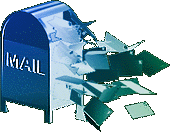| FIRST AID | AVIAN DEATH | FEATHER JUNCTION INDEX |
| PROMOTIONAL LINKS | E-MAIL US!! | . |
| Exotic Bird Care
Bird Aid 7514 Charmant Drive #923 San Diego, CA, 92122 1-619-793-2473 $14.95 plus $2.00 s/h CA residents add 7.75% tax |
Thief Of Hearts
First Aid Kit 421 N. Glenn Wichita, KS, 67203 1-316-267-1656 $39.95 (loaded with stuff!) |
| TOP OF PAGE | FEATHER JUNCTION INDEX |
| TOP OF PAGE | FEATHER JUNCTION INDEX |

| TOP OF PAGE | FEATHER JUNCTION INDEX |

| TOP OF PAGE | FEATHER JUNCTION INDEX |
